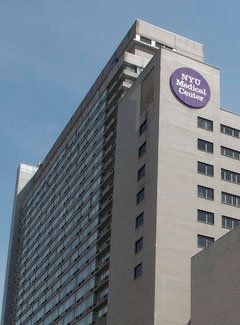For many medical career hopefuls, a top barrier is the steep financial investment in education and training. After all, the average medical school graduate’s debt hit $190,000, with some 25 percent of graduates carrying debts topping $200,000. Of course, the payoff is lucrative – eventually. Even the lowest-earning doctors, such as pediatricians and family doctors, enjoy average annual salaries of $187,540 and $208,560, respectively – more than triple the median US household income. Trouble is, those salaries typically don’t manifest until about seven years after one enters medical school.
Meanwhile, hospitals and clinics nationwide are bracing for the expected critical shortfall of trained physicians. At this very moment, the US needs upward of 13,800 more primary care physicians just to meet current demand, federal government estimates show. By 2030, the Association of American Medical Colleges predicts the shortage could hit 121,300 physicians.
To help assure that our nation won’t be caught in a health care availability crisis, several medical schools are slashing tuition, while health-related organizations offer tuition coverage for certain commitments. For instance:
- Last year, thanks to a generous donor, Texas Christian University and the University of North Texas Health Science Center announced that students matriculating in 2019 will receive free tuition covering their first year.
- The University of California Riverside Medical School offers full scholarships to students based on need and a commitment to remain in the region when they graduate.
- Case Western Reserve University School of Medicine offers tuition to students who agree to remain in school for an extra year to conduct medical research.
- The federal National Health Service Corps offers to pay medical students’ tuition if they agree to practice in an underserved area for two years.
- Most recently, thanks in part to a $100 million donation from Home Depot co-founder Ken Langone, New York University made headlines by announcing it would offer free tuition to all medical students regardless of financial need.
“Aspiring physicians and surgeons should not be prevented from pursuing a career in medicine because of the prospect of overwhelming financial debt,” Dr. Robert Grossman, the dean of the NYU School of Medicine, said.
By alleviating the burden of medical student debt, NYU aims to attract a more diverse group of candidates and to encourage students to enter primary care and other less lucrative fields in comparison to more specialized areas. Thus far, it’s worked for UC Riverside, where 53 percent of students come from economically disadvantaged backgrounds. Research shows doctors from underserved communities are more likely to practice in places similar to where they grew up. Also, more 20 percent of the school’s students go into primary care, significantly higher than the national average of about 14 percent.
No matter where you study or what you pay, your financial and time investment will be significant while studying medicine. WOLFPACC can help assure that you maximize that investment with on-one-one tutoring and review courses designed to help you ace your USMLE or COMLEX exams. Call 904-209-3140 to find out how.





